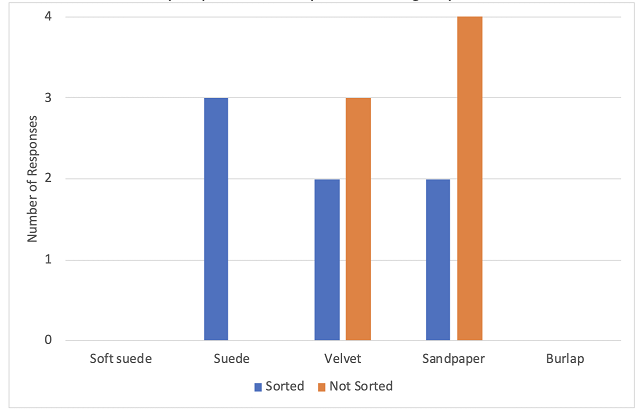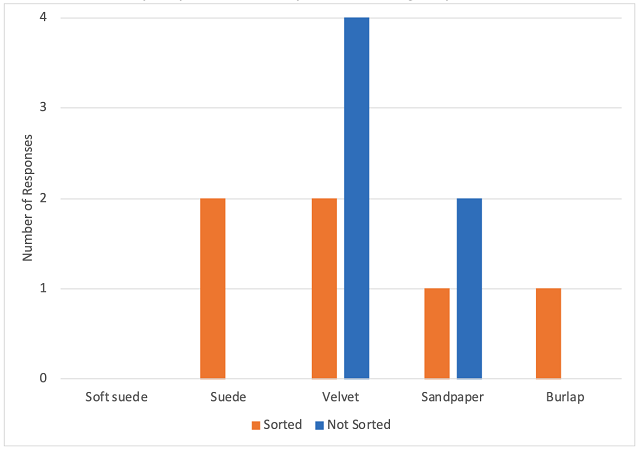Do jacks really matter? Testing the impact of post-destemmer sorting on Cabernet Franc and Petit Verdot wine quality (2022)
Doug Fabbioli
Fabbioli Cellars
Summary
Recent advances in destemmer technology have reduced the amount of non-grape material entering fermentation bins. However, stem jacks are usually still present at some level. Post-destemming sorting of jack stems as a way to limit green character and harsh stem tannins is a common practice in Virginia wineries. However, post-destemming sorting is labor intensive and time consuming. The purpose of this experiment was to determine if the time and effort spent sorting jack stems made a perceptible difference in overall wine quality. Experiments were conducted using both Cabernet Franc and Petit Verdot. For each variety, one TBin of fruit was fermented from grapes that were sorted post-destemming while a second TBin of fruit was fermented from grapes that were not sorted. General wine chemistry was very similar between treatments for both varieties. In each, the unsorted fruit produced wine that had slightly higher tannins. The Cabernet Franc wines were not significantly different in a triangle test. The Petit Verdot wines were distinguishable in a triangle test, however there were no differences in sensory scores for fruit intensity, fruit character, herbaceous/green character, bitterness or astringency.
Introduction
During his service as the Virginia Tech Enology Extension Specialist, Bruce Zoecklein made many contributions to quality wine production in Virginia. Many of the winemaking techniques and standard protocols at Virginia wineries are based on his advice during this time, and his Enology Notes remain one of the best resources for quality wine production in Virginia and beyond.
In accordance with Zoecklein’s advice, many Virginia wineries employ post-destemming sorting to remove jack stems as standard protocol. In Enology Notes #1071, Zoecklein cautions that in the dry 2005 vintage, the crop may suffer abrupt stops in Brix increases due to low moisture reserves, over-cropping, or insufficiently developed root systems. He states that this may lead to immature cap stem phenols evidenced by difficult to pick berries, and resulting in immature skin and seed tannins. Among other recommendations, he includes this caution:
Use care in destemming. A high concentration of immature cap stems suggests the need for post-destemming sorting. This may be a requirement for consistent premium red wines in this region, and is always a good idea. This may be essential if the red must contains a high concentration of immature cap stems or jacks1.
In Enology Notes #1172, while discussing phenolic compounds in red wine processing, he said:
We know that prefermentation sorting is important with regard to phenolic composition of wines, as is gentle fruit handling. …An area traditionally overlooked is post-destemming sorting to remove cap stems or jacks. Stem tannins are chemically different from skin tannins, and impart a different sensory profile. Stem tannins, including cap stem tannins, are more astringent and harsher than skin tannins. Jack stems in the fermentor can be a problem, if the concentration is high and the stems are green or not lignified, resulting in increased tannin intensity and astringency2.
With these recommendations in mind, all Vitis vinifera red grapes get sorted at Fabbioli Cellars as part of an SOP developed decades ago. However, sorting can be time consuming and expensive especially when considering the opportunity cost of labor during harvest. Several aspects of production flow have been put in place to ensure that the best quality fruit enters the winery. Fruit is hand harvested with care, pre-sorting in the vineyard to avoid damaged or diseased fruit. A full time crew is paid by the hour rather than by the lug in order to encourage quality picks. When fruit comes into the winery, it is destemmed and crushed, then sorted by 4-6 people before it is deposited in TBins for fermentation. The primary aim of sorting at this stage is to remove any stems or “funk” that gets through.
In recent years, Doug Fabbioli has begun to question if recent advances in vineyard management in Virginia and improvement in destemmer technology may have diminished the need for post-destemming sorting, allowing for better production efficiency without a loss in quality. The purpose of this experiment was to compare wine quality made from fruit that was sorted post-destemming from that which was not sorted. The experiment was initially planned for Cabernet Franc because of the potential green character that might come from the jacks. During harvest, many red lots were picked on the same day in anticipation of a rain event, leading to a backlog of lots to be sorted. This presented an additional opportunity for experimentation with Petit Verdot.
Methods
Fruit was hand harvested, chilled overnight, then destemmed and lightly crushed. One 1.5 Ton bin per variety was filled without sorting. One 1.5 Ton bin per variety was sorted post-destemming prior to placement in the fermentation vessel. Sorting was done by a group of 4-6 people. Each bin received equal weight of fruit. All other cellar operations were the same between bins of the same variety, including additions, inoculations, pressing times, and barrel character. Oak chips (1 lb/ton), 25 ppm SO2 and 75 mL/ton Scottzyme Color Pro were added at the time of destemming. Juice samples were taken for analysis immediately after processing. The following day, Cabernet Franc was inoculated with 25 g/hL CSM yeast rehydrated in 30 g/hL GoFerm. Petit Verdot was inoculated with 25 g/hL D80 yeast rehydrated in 30 g/hL GoFerm. Fermentations were co-inoculated for malolactic fermentation with VP41 one day after yeast inoculation. Cabernet Franc was chaptalized to raise the sugar by 1° Brix after the start of fermentation (approximately 3 days post-destemming). At the completion of malolactic fermentation, 1.2 g/L tartaric acid was added to Cabernet Franc and 1.9 g/L was added to Petit Verdot. All barrels were treated with 50 ppm SO2 without racking.
Sensory analysis was completed by a panel of 18 wine producers for Cabernet Franc and 17 wine producers for Petit Verdot. Wines were presented blind in randomly numbered glasses. Tasters were presented with three wines, two of one type and one of another, and asked to identify which wine was different (a triangle test). To account for order effects, there were four tasting groups with the unique wine in the triangle test balanced between groups. Tasters were then asked to score each wine on a scale of 0 to 10 for fruit intensity, fruit character, herbaceous/green character, bitterness and astringency. They were also given open ended questions to describe the wines. Results for the triangle test were analyzed using a one-tailed Z test. Descriptive scores were analyzed using repeated measures ANOVA. Lastly, tasters were given 5 different tangible fabrics (in order from softest to roughest; soft suede, suede, velvet, sandpaper and burlap) and were asked to select the fabric that most closely represented the astringency of the wine. Fabrics were chosen to include an increasingly rough tactile perception.
Results
Additional effort for sorting
For the experiment, each treatment was destemmed and crushed into 1.5 ton fermenters. The sorted fruit was destemmed to a plastic slide between the destemmer and TBin. As fruit moved over the slide, members of the crew picked out jacks and any other MOG. Approximately one lug of stem material was removed per lot. Sorting in this way required approximately 30 extra minutes per harvest bin, with up to 6 people. When fruit was not sorted, the work was approximately 5 times faster.
Cabernet Franc
Cabernet Franc was harvested with relatively low Brix (Table 1), indicating immature fruit, which, according to Zoecklein’s guidelines, made it a good candidate for sorting out jack stems. General chemistry of the must at harvest (Table 1) as well as post-fermentation chemistry (Table 2) were very similar between treatments. Slightly higher Brix in the fermentation of unsorted fruit led to slightly higher ethanol in the resulting wine. The wine made from unsorted fruit also had slightly higher anthocyanins and tannins (Table 3, Figure 1). Higher tannin profiles might be a consequence of higher ethanol, as much as from higher stem load in the fermenter.
In a triangle test of sorted vs. unsorted Cabernet Franc, 7 out of 18 respondents were able to distinguish which wine was different, indicating the wines were not significantly different (Z=0.25, p= 0.40). Those able to distinguish the wines scored the wine from unsorted fruit higher for fruit character than wine from sorted fruit. Fruit character was defined as a range from bright/fresh/red fruit (low scores) to dark/dried/black fruit (high scores), meaning the unsorted fruit produced wine with darker fruit character. This wine also received significantly higher scores for astringency. There were no significant differences in scores for the remaining descriptors (fruit intensity, herbaceous/green, and bitterness) (Table 6). When asked to compare the astringency of wine to 5 different tactile fabrics, wine made from sorted fruit was categorized to indicate softer tannins while wine made from unsorted fruit was categorized with descriptors consistent with coarser texture (Figure 3).
Petit Verdot
Petit Verdot fruit was harvested just before a rain event, at the same time as many other lots, so juice chemistry was not taken. The finished chemistry of the wines is very similar between treatments (Table 4), with ethanol values indicating this, too, may have been relatively low Brix (potentially underripe) fruit. Samples were taken from Barrel 1 for sensory analysis to minimize differences in free SO2 between barrels. The wine made from unsorted fruit had higher tannin but lower anthocyanins than the wine made from sorted fruit (Table 5, Figure 2).
In a triangle test of Petit Verdot made from sorted vs. not sorted fruit, 15 out of 17 respondents were able to distinguish which wine was different, indicating the wines were significantly different (Z=4.54, p< 0.001). However, there were no significant differences in scores for any of the specific descriptors (Table 7). When asked to compare the astringency of wine to 5 different tactile fabrics, both wines were most often categorized with velvet texture (Figure 4).
References
(1) Zoecklein, B. Red Fruit Maturity. Enology Notes 2005, 107.
(2) Zoecklein, B. Tannins, Color and the 2006 Season, Continued: Phenolic Compounds and Red Wine Processing. Enology Notes 2006, 117.
Table 1: Juice chemistry for Cabernet Franc (October 3, 2023)(Vinterra)

Table 2: Wine chemistry of Cabernet Franc wine made from sorted and not sorted fruit (ICV Labs, March 2023)

Table 3: Phenolic composition of Cabernet Franc wine made from sorted and not sorted fruit (mg/L) (ETS Labs, March 2023)

Table 4: Wine chemistry of Petit Verdot wine made from sorted and not sorted fruit (ICV Labs, March 2023)

Table 5: Phenolic composition of Petit Verdot wine made from sorted and not sorted fruit (mg/L) (ETS Labs, March 2023)

Table 6: Mean descriptive scores for five attributes of sorted vs. not sorted Cabernet Franc

Table 7: Mean descriptive scores for five attributes of sorted vs. not sorted Petit Verdot

Figure 1: Comparison of phenolic measurements for Cabernet Franc (ETS Labs)

Figure 2: Comparison of phenolic measurements for Petit Verdot (ETS Labs)

Figure 3: Fabric selected by respondents to represent astringency of each Cab Franc treatment

Figure 4: Fabric selected by respondents to represent astringency of each Petit Verdot treatment











